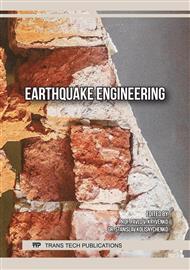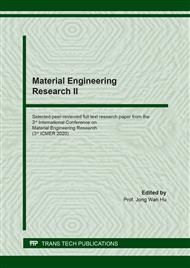p.13
p.19
p.25
p.33
p.39
p.47
p.53
p.59
p.65
Amplification Factor for Wood-Concrete Hybrid Structures Based on Dynamic Numerical Simulation
Abstract:
Extensive concerns on environmental protection have provoked low-carbon buildings to be the mainstream of building construction worldwide, and wooden structures in this sense outperform other structural forms. Wooden-concrete hybrid structures featuring distinct wooden and concrete stories typically exhibit uneven stiffness distribution along the structure height; in particular, abrupt stiffness changes occur at the wood-concrete transition stories. Therefore, structural designing of such hybrid structures must consider a stiffness amplification effect in the static structural calculation as well as complicated procedures in the dynamic analysis. To determine an appropriate amplification factor for design purpose, this study employed a dynamic numerical approach to determine the displacement response of wooden-concrete hybrid buildings and compared the results with the displacement response obtained from static analyses. According to the results, it is found that the appropriate amplification factor should beα= f (x) = 0.47x + 1.00.αcan be valued 1.94 at 2nd floor, 2.41 at 3rd floor and 2.88 at 4th floor. The results may serve as a reference for seismic designing of wooden-concrete hybrid structures.
Info:
Periodical:
Pages:
65-69
Citation:
Online since:
January 2021
Authors:
Price:
Сopyright:
© 2021 Trans Tech Publications Ltd. All Rights Reserved
Share:
Citation:



